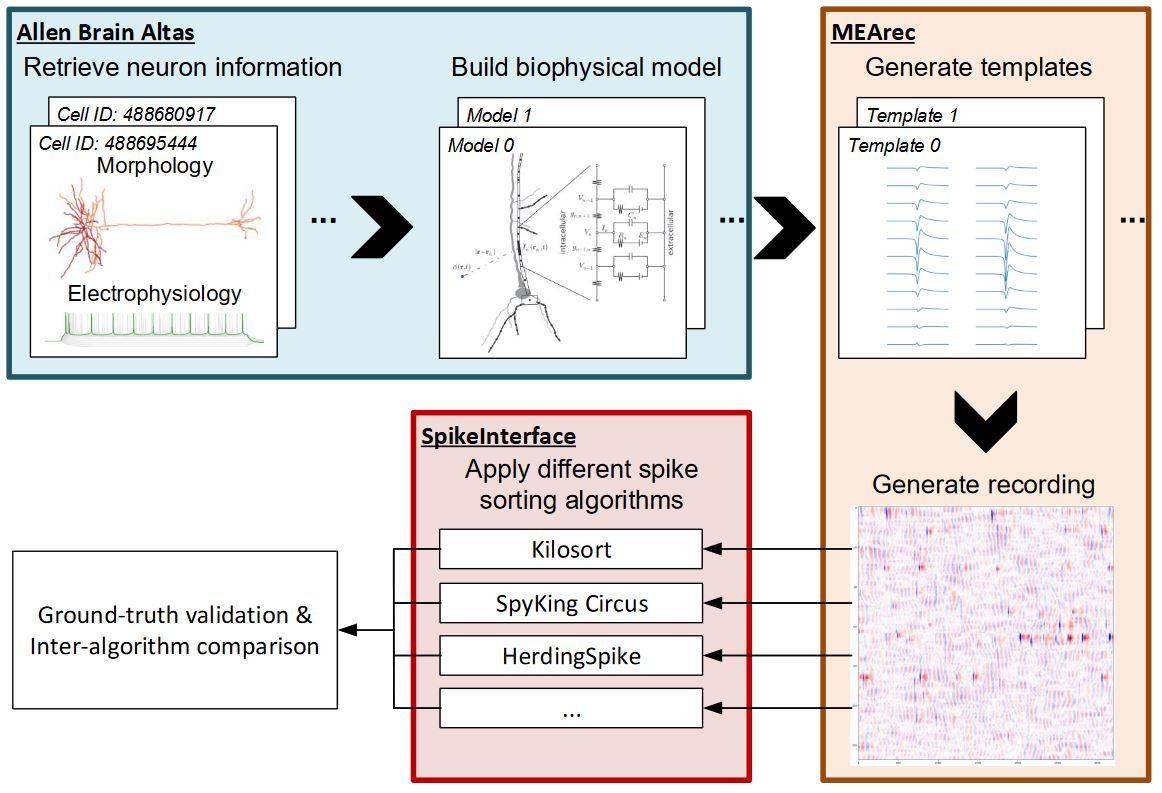Neurosim: Extracellular Electrophysiological Simulation and Ground-Truth Comparative Analysis of Spike Sorting Algorithms
Team: Neurosim
- Program: Biomedical Engineering
- Course: Other
Project Description:
The extracellular electrophysiological recording is one of the well-established methodologies tracking neuron activities. Yet, spike sorting, the process of accurately and precisely inferring spikes from extracellular electrophysiological recordings, remains a critical challenge. Several spike sorting algorithms have been proposed over the years to tackle the spike sorting challenge, but nuances in configuration parameters, as well as the different strategies employed for spike detection, feature extraction, and clustering, introduce distinct inherent biases unique to each spike sorting algorithm that significantly impact the outcomes and lead to wide variations in sorting results.
Here we proposed Neurosim, using extracellular recording simulation to uniformly benchmark the performances of spike sorting algorithms. Comparison results were summarized and discussed, highlighting the different biases of various spike sorting algorithms. Our study can provide useful guidance for researchers in selecting appropriate spike sorting algorithms and may shed light on the improvements in the next-generation spike sorting algorithms.
Project Poster
Open full size poster in new tab (PDF)
Project Post Summary:
– We conducted extracellular electrophysiological simulations to generate simulated recording datasets for systematic evaluation of different spike sorting algorithms, especially paying attention to different drift conditions.
– We then applied several prevalent spike sorting algorithms to the simulated datasets and compared their results with each other as well as with the ground truth settings during the simulation.
– Comparison results were summarized and discussed, highlighting the different biases of various spike sorting algorithms.



